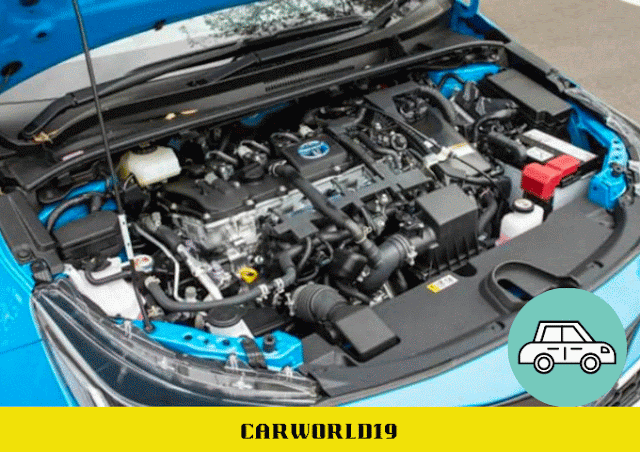Thanks to modern culture, we all know what a hybrid is - hello, werewolves, Minotaur, and Sharktopus from the weirdly underappreciated 2010 film Hardtops - but what does 'hybrid' imply in a car?
It's a hybrid of two things, neither of which is a shark or an octopus: a petrol-powered internal-combustion engine (ICE) and a battery-powered electric motor that works on electricity, as you would have guessed.
 |
| The top five issues with hybrid vehicles |
What are hybrid automobiles, and how do they work?
A hybrid's battery self-charges due to a process known as regenerative braking, in which kinetic energy created while slowing or stopping the car is stored in the battery or directed directly to the wheels, whereas a plug-in hybrid electric vehicle (PHEV) must be plugged into an external power source to charge its battery (which is typically larger and offers more all-electric driving range).
Hybrids and plug-in hybrid electric cars (PHEVs) are considered a little more ecologically beneficial stepping stone toward fully electric vehicles (EVs), with the ICE in hybrids and PHEVs serving more as a backup to offer drivers suffering from dreaded range anxiety peace of mind (aka the fear your EV will conk out before you find somewhere to recharge it).
While hybrids and plug-in hybrids are becoming more popular in Australia, there are a few drawbacks and difficulties to be aware of before forking out the cash.
Problems with hybrid vehicles
The ICE is a non-profit organization that promotes
Depending on how you look at it, the internal-combustion engine in a hybrid or PHEV can be both a benefit and a negative.
On the one hand, the ICE is ideal for relieving range anxiety by providing a convenient backup should the battery run out of juice. On the other hand, it continues to generate damaging CO2 emissions into the atmosphere, which is generally the primary concern when purchasing an electric car.
There are two drivetrains available
When you have an electric motor and an internal combustion engine, you have two drivetrains, each with its own set of maintenance needs, which can make things more complicated when it comes to repairs.
Even if electric motors have fewer moving components and hence require less maintenance than traditional ICEs, you still have the ICE. I'm a hybrid, which means I'm subject to all the possible maintenance concerns it entails.
Because the automobile has two drive trains, neither the ICE nor the electric motor batteries will be as large as they would be if it were only an ICE or an EV, and both would be less powerful.
Cost
While the price difference between ICE vehicles and hybrids/PHEVs isn't as large as the difference between ICE vehicles and EVs, they are still more expensive, making pricing one of hybrid cars' major drawbacks.
The Ascent Sport hatchback is the lowest petrol-powered Toyota Corolla, costing $25,395, with the Ascent Sport hybrid adding $2000 to the price ($27,395).
Find out more about hybrid cars
PHEVs are even more expensive: the MG HS Essence PHEV, one of the most affordable in Australia, costs $38,900 (the cheapest ICE variant, the MG HS Excite X, costs $29,700).
Fuel economy and handling are also lower
Hybrids and plug-in hybrids combine two drivetrains in one vehicle, resulting in increased weight, which can reduce fuel economy and handling, as well as the previously noted necessity to compromise by reducing both the battery and the ICE.
Batteries that are temperature sensitive
Excessive temperatures are not kind to the batteries used in electric vehicles: too much heat accelerates battery breakdown, while freezing reduces battery range.
Cold conditions can cause hybrid batteries to take longer to achieve operating temperature, causing the car's ICE to use more energy and result in inferior fuel economy.
Production of batteries
Rare-earth metals are utilized in the lithium-ion batteries in hybrids and PHEVs, and the equipment needed to mine them - notably bulldozers and other mining machinery - is diesel-powered, which contradicts the idea of buying a hybrid or PHEV to have a beneficial environmental impact.
Recycling of batteries
The good news is that after an EV battery's life cycle is over, it may be recycled. The bad news is that removing the reusable materials from batteries is a time-consuming and costly operation, so there's still a long way to go before it's done on a large, cost-effective, and ecologically acceptable scale.
A plug is required for PHEVs
Yes, we're repeating the obvious, but because PHEV batteries aren't self-charging like hybrid batteries, you'll have to connect your PHEV to an external power source every time the battery needs charging. Some people won't have a problem with this, but for others, finding chargers and navigating the many cords and connectors may be more bother than it's worth.


Great! your blog is very interesting and informative because this blog contains meaningful content.
ReplyDeleteIf your are looking for these ev charging point operators in india.
Our company provides the best services in India.